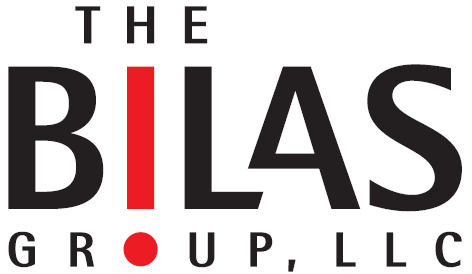What is Job Methods Improvement?
Job Methods is the TWI program that trains leaders in how to improve their work processes and procedures. After obtaining process stability through the use of JI and JR, JM becomes a powerful tool to improve your processes for even greater performance gains. Like all the TWI programs, JM uses a 4-step method which is trained in five 2-hour sessions. The focus of JM is to identify and question every detail of the job – every step, motion or action – to determine the best way to do the job with the currently available manpower, machines, and materials. JM is applicable to all types of work which involve the use of your hands, moving materials or operating machines, actions found in a majority of the jobs in the workplace.
JM 4-Step Method
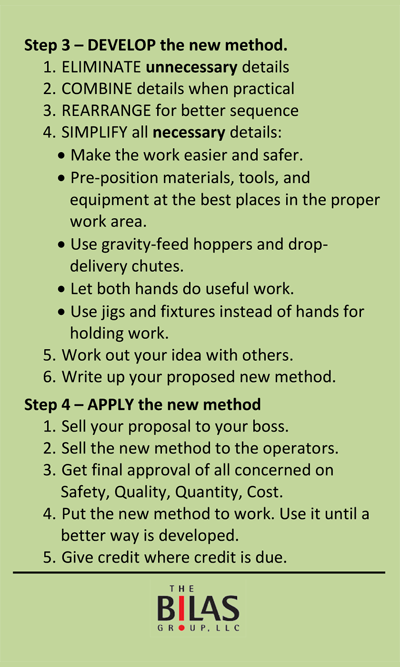
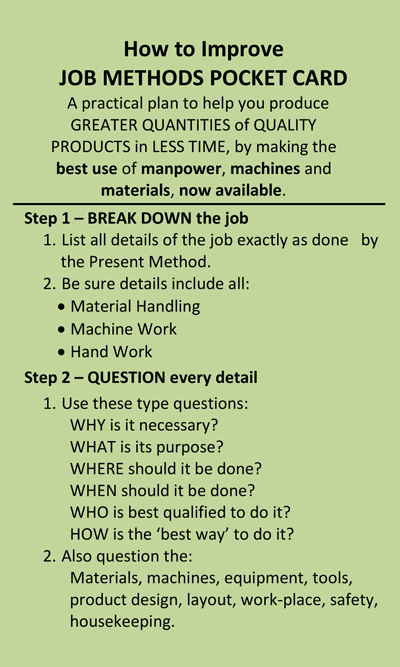 The JM Pocket Card contains the four steps for JM: Step 1 – Break Down the Job, Step 2 – Question Every Detail, Step 3 – Develop the New Method, and Step 4 – Apply the New Method. In Step 1 – Breakdown the Job – the leader lists all the details of the job exactly as they are done in the current method. This analysis is much more detailed than a Job Instruction breakdown. The more details that are captured, the easier it is to make improvements. When capturing the details, it is best to go to the point of activity and list them out on the JM Job Breakdown form.
The JM Pocket Card contains the four steps for JM: Step 1 – Break Down the Job, Step 2 – Question Every Detail, Step 3 – Develop the New Method, and Step 4 – Apply the New Method. In Step 1 – Breakdown the Job – the leader lists all the details of the job exactly as they are done in the current method. This analysis is much more detailed than a Job Instruction breakdown. The more details that are captured, the easier it is to make improvements. When capturing the details, it is best to go to the point of activity and list them out on the JM Job Breakdown form.
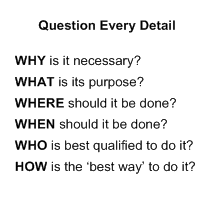 In Step 2, the leader questions every detail in the current method. JM uses six questions to analyze each detail. The order of the questions is important. First you’ll want to determine why the task necessary. The next question, what is its purpose, is a check of the first question. Sometimes a task may not seem necessary, but it does perform a required purpose. The next three questions refer to the time, place and by whom the task should be done. Only after asking the first five questions do you ask how best to do the task. If you were to ask how best to do the task first, you may optimize a task that is later eliminated or reconfigured.
In Step 2, the leader questions every detail in the current method. JM uses six questions to analyze each detail. The order of the questions is important. First you’ll want to determine why the task necessary. The next question, what is its purpose, is a check of the first question. Sometimes a task may not seem necessary, but it does perform a required purpose. The next three questions refer to the time, place and by whom the task should be done. Only after asking the first five questions do you ask how best to do the task. If you were to ask how best to do the task first, you may optimize a task that is later eliminated or reconfigured.
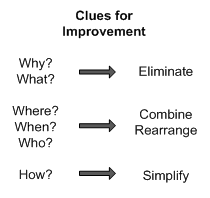 The questioning process in Step 2 leads to improvement ideas in Step 3 – Develop the New Method (see box to right). Asking why the action is necessary or what purpose does it serve, leads to clues that might help eliminate the action all together. Asking where or when it should be done and who is best qualified to do the action leads to clues that can help combine or rearrange the task’s location and time. Looking for the best way to do the task leads to clues on how to simplify it.
The questioning process in Step 2 leads to improvement ideas in Step 3 – Develop the New Method (see box to right). Asking why the action is necessary or what purpose does it serve, leads to clues that might help eliminate the action all together. Asking where or when it should be done and who is best qualified to do the action leads to clues that can help combine or rearrange the task’s location and time. Looking for the best way to do the task leads to clues on how to simplify it.
After creating a new method of doing the job, you will need to apply the new method. Step 4 is about selling your new method to those above, but also to those who work with and for the you. Not only must the new ideas be sold, but approvals from various groups must be gained. To help sell the idea, you can use the JM Proposal form to help capture and present the new method. And after the idea is implemented, the JM pocket cards reminds you to give credit to those who helped develop the new method.
Benefits
The methodical JM 4-Step method can significantly help improve the productivity of your operation. It can work in all types of operations, from manufacturing to administrative or service environments, wherever there is work being done with machines, materials or using one’s hands. Some of the performance improvements you can expect are:
- Improved productivity
- Increased throughput
- Faster cycle times
- Reduced lead times
- Better yields
- Reduced scrap and rework
- Improved work culture
Through close analysis and a questioning mindset, JM can be the foundation for your continuous improvement program. Contact us to see how Job Methods Improvement can help your organization.
